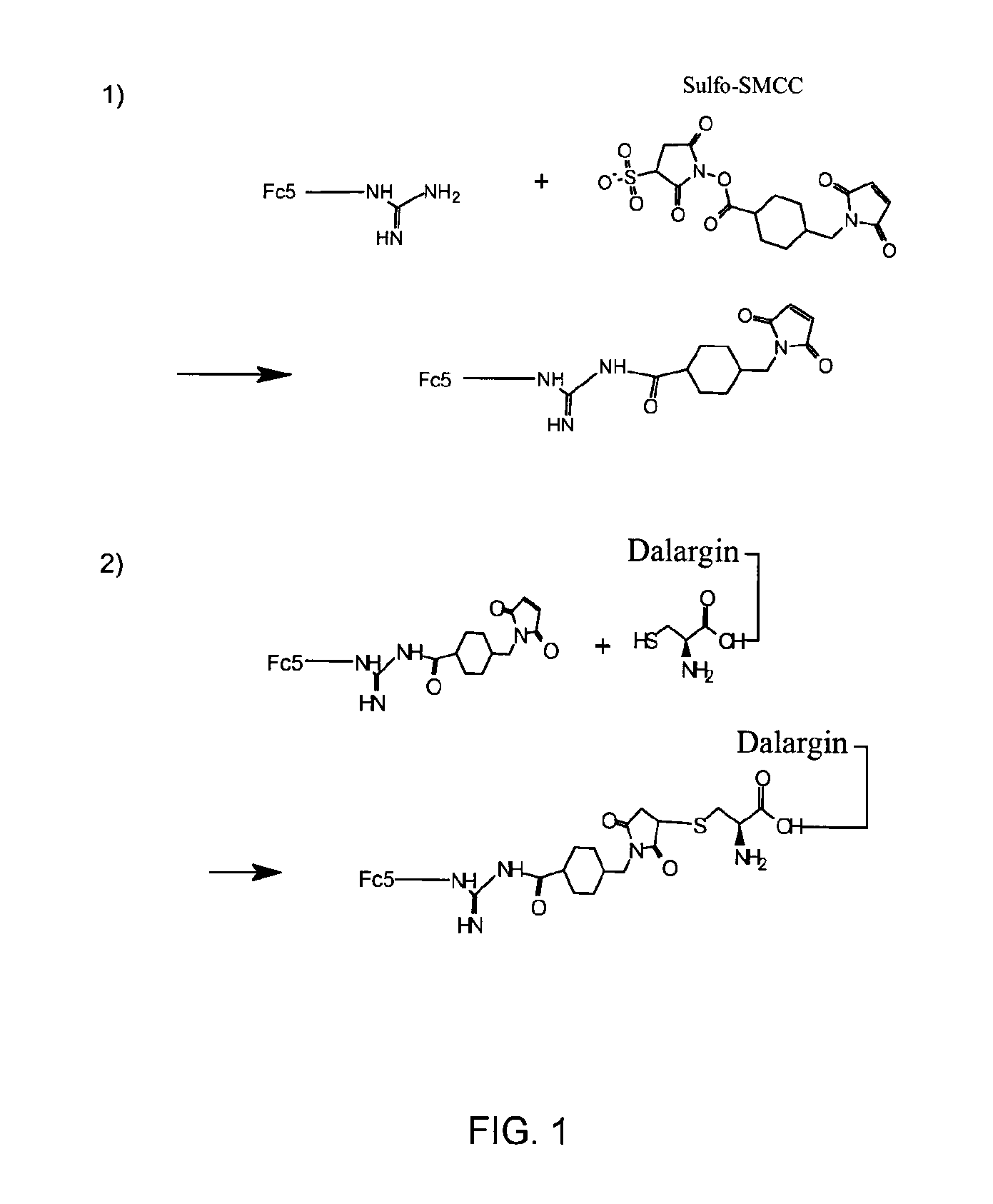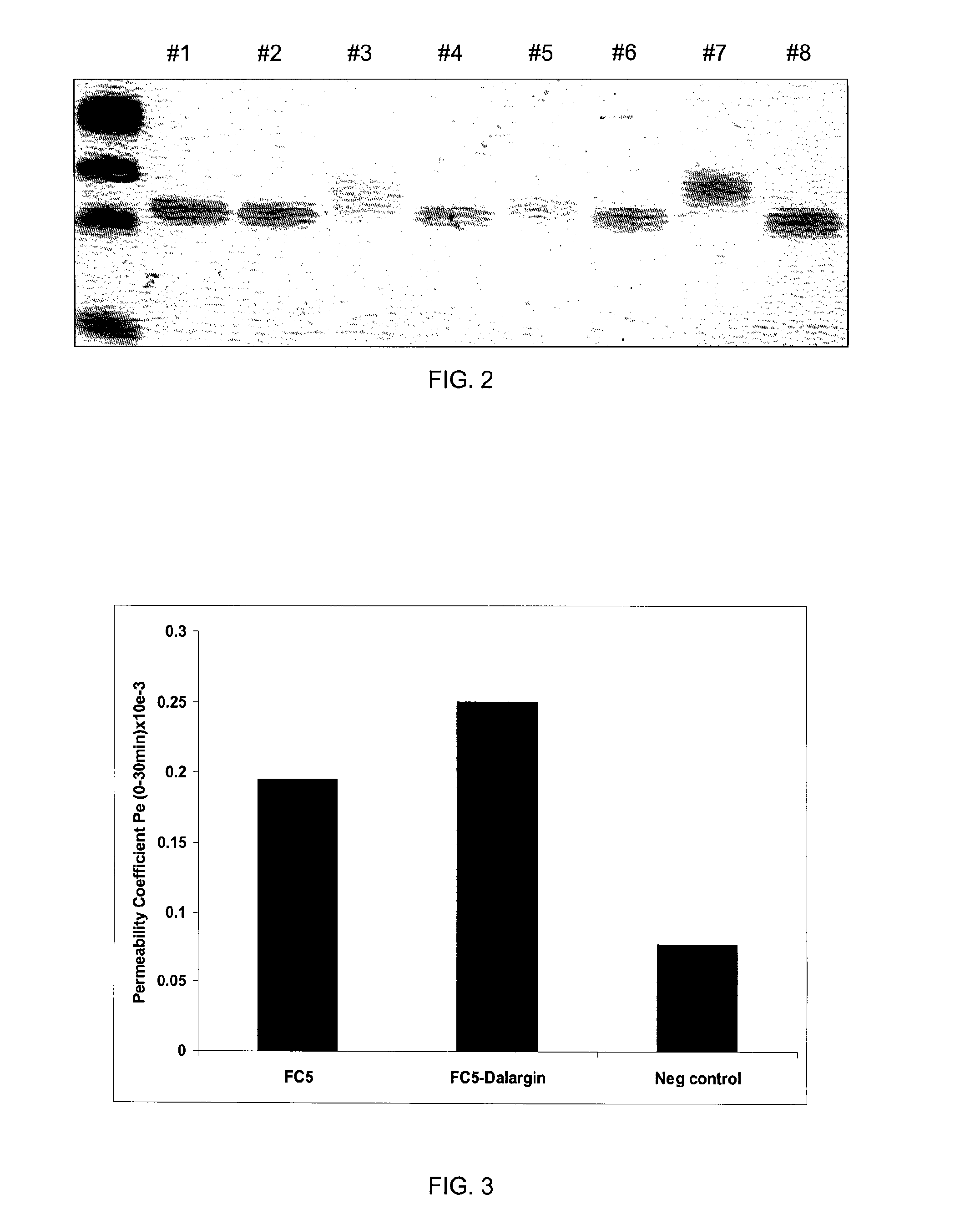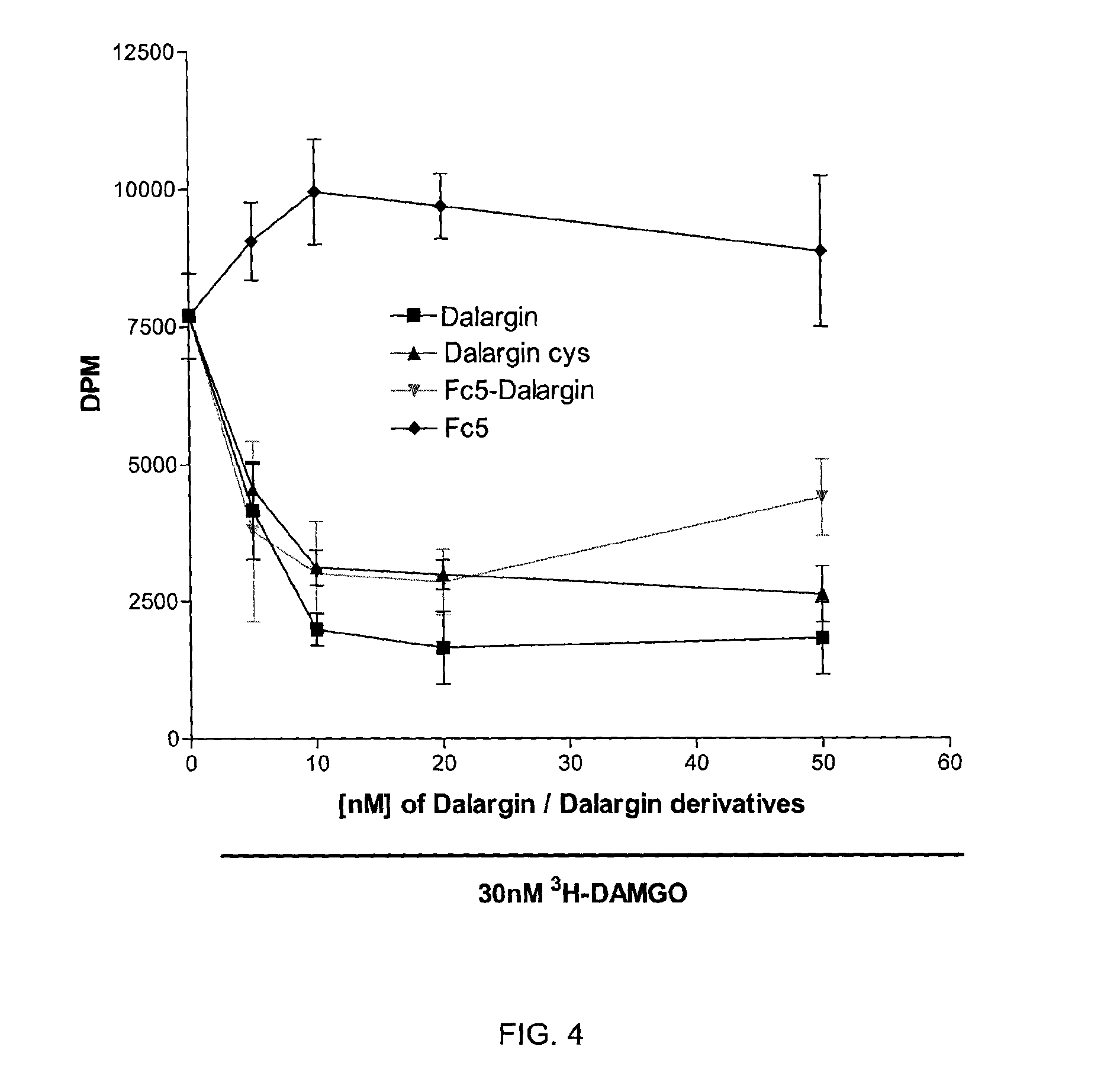Compositions and methods for brain delivery of analgesic peptides
a technology of brain and peptide, which is applied in the direction of peptides, drug compositions, antibody medical ingredients, etc., can solve the problems of withdrawal syndrome, no clinically approved/used approach to deliver biologics, and respiratory depression that can be life-threatening
- Summary
- Abstract
- Description
- Claims
- Application Information
AI Technical Summary
Benefits of technology
Problems solved by technology
Method used
Image
Examples
example 1
FC5 sdAb Cloning, Expression and Purification
[0075]FC5 single domain antibody (sdAb) was cloned, expressed and purified in preparation for conjugation to analgesic peptides. FC5 was expressed in fusion with His5 and c-myc tags) to allow for purification by immobilized metal affinity chromatography using HiTrap Chelating™ column and for detection by immunochemistry, respectively.
[0076]Briefly, DNA encoding sdAb FC5 (SEQ ID NO:12) was cloned into the BbsI / BamHI sites of plasmid pSJF2 to generate expression vector for FC5 (Muruganandam et al, 2002). The DNA constructs were confirmed by nucleotide sequencing on 373A DNA Sequencer Stretch (PE Applied Biosystems) using primers fdTGIII, 5′-GTGAAAAAATTATTATTATTCGCAATTCCT-3′ (SEQ ID NO:8) and 96GIII, 5′-CCCTCATAGTTAGCGTAACG-3′ (SEQ ID NO:9).
[0077]Single clones of recombinant antibody-expressing bacteria E. coli strain TG1 were used to inoculate 100 ml of M9 medium containing 100 μg / ml of ampicillin, and the culture was shaken overnight at 20...
example 2
FC5-Dalargin Conjugation
[0079]The FC5 sdAb prepared in Example 1 was conjugated to Dalargin, as described below.
[0080]4 mg of dialyzed FC5 from Example 1 was placed in a 1.5-ml micro-centrifuge tube. Sulfo-SMCC was added to the FC5 in a 10× molar ratio; specifically, 232 μl of 5 mg / ml Sulfo-SMCC was added. The micro-centrifuge tube containing the mixture was then flushed with nitrogen gas and incubated for 2 hours at room temperature (RT). Once the reaction is done, the unreacted Sulfo-SMCC was removed from the maleimide-activated FC5 using Millipore Amicon Ultra-4, Ultracel 3K column. The solution was added to the column, the volume was completed to 4 ml with PBS, and the mixture was spun at 4000×g for 13 minutes at 10° C. This process was repeated once more, and the product was washed 3 times.
[0081]Separately, and during the above steps, Dalargin-cysteamide-OH (Dalarin-cys) was reduced with TCEP. A 5 mg / ml stock of Dalargin-cys dissolved in PBS was prepared and flushed with N2. Si...
example 3
Transport of the FC5-Dalargin Across In Vitro Blood Brain Barrier Model
[0084]To show that the FC5-Dalargin conjugate (Example 2) maintains the blood-brain barrier permeability of FC5, an in vitro assay was used as described below.
[0085]FC5 and FC5-Dalargin were labelled by covalent conjugation to Cy5.5 N-hydroxysuccinimide (NHS) ester using methods recommended by the manufacturer (GE Healthcare). Cy5.5 NHS was bound to FC5 through a thioether covalent bond.
[0086]Immortalized Adult Rat brain endothelial cells (ARBEC) were used as the in vitro blood brain barrier model. ARBEC (80,000 cells / membrane) were seeded on a 0.5% gelatine-coated Falcon tissue culture inserts (pore size-1 μm; surface area 0.83 cm2) in 1 ml of growth medium. The bottom chamber of the insert assembly contained 2 ml of growth medium supplemented with the fetal human astrocyte-conditioned medium in a 1:1 (v / v) ratio.
[0087]Transport studies were performed 7 days post-seeding. Filter inserts were rinsed with transpor...
PUM
| Property | Measurement | Unit |
|---|---|---|
| MW | aaaaa | aaaaa |
| pH | aaaaa | aaaaa |
| volume | aaaaa | aaaaa |
Abstract
Description
Claims
Application Information
 Login to View More
Login to View More - R&D
- Intellectual Property
- Life Sciences
- Materials
- Tech Scout
- Unparalleled Data Quality
- Higher Quality Content
- 60% Fewer Hallucinations
Browse by: Latest US Patents, China's latest patents, Technical Efficacy Thesaurus, Application Domain, Technology Topic, Popular Technical Reports.
© 2025 PatSnap. All rights reserved.Legal|Privacy policy|Modern Slavery Act Transparency Statement|Sitemap|About US| Contact US: help@patsnap.com



